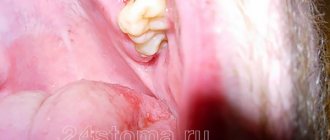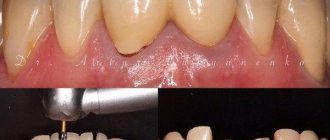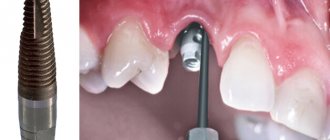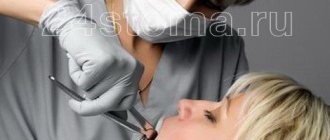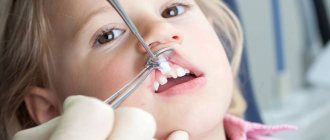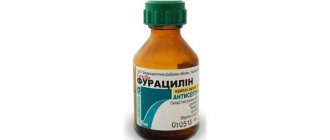The procedure of removing a tooth or tooth root is a common operation in dental surgery. It must be performed by a dentist-surgeon. During tooth extraction, tissue and blood vessels are damaged, leaving a wound filled with thickening blood.
To ensure healing proceeds quickly and there are no complications, you should follow simple recommendations after tooth extraction:
- remove the gauze pad no earlier than 20 minutes after the procedure;
- do not eat for 2 hours;
- Do not eat hot food during the next day;
- do not rinse your mouth;
- do not eat food that is harmful to the oral cavity;
- do not examine the wound using improvised means;
- do not apply compresses;
- Do not overcool, do not overheat, and do not undergo physical exertion for several days.
When following the recommendations, a lot of questions still arise. Let's look at the most common ones.
Content:
- A tooth has been removed: can you or can’t smoke?
- Why smoking after removal is undesirable
- Is it possible to smoke after tooth extraction if there are stitches on the gums?
- Smoking and anesthesia are an undesirable combination
- Useful information about the effect of nicotine on the mucous membranes of the oral cavity
- How to speed up the healing of a hole
A person who has just had a tooth removed is usually nervous. This is understandable - he has suffered stress and wants to relax. Smokers often use cigarettes to calm down, but the question arises: when can you smoke after dental surgery? We suggest you look into it.
What to do -
Below we will discuss recommended implantation techniques and types of implants for smokers. Below we will talk about two types of implants, which are very different from each other. Firstly, classic traditional implants (in the professional literature they are called “crestal”), which are installed in the spongy bone of the alveolar process of the jaws.
Secondly, about the so-called basal or single-phase implants, which are installed in the deepest layers of the bone. Such implants are safer for smokers in general, and for heavy smokers, they are probably the only reasonable alternative.
When installing classic (crestal) implants –
As we have already said: traditional type implants are installed in the same parts of the bone (cancellous bone) in which the roots of your own teeth are located.
This means that the zone of osseointegration of these implants will begin immediately under the gum mucosa. Thus, the upper part of the osseointegration zone (located around the implant neck) will be almost directly affected by both nicotine and pathogenic bacteria. What to do with all this?
- Firstly – you should choose the right implant model... the success of implantation is largely based on the special properties of the implant surface and, it must be said, that the surfaces of implants from different manufacturers are absolutely not equivalent. As we said above, a history of smoking reduces both the rate of osseointegration and worsens the very quality (strength) of attachment of the implant to the bone.
But there are implant surfaces that have active properties and stimulate osteogenesis on the surface of the implant, which allows, in some way, to compensate for the effects of smoking. The following technologies impart active properties to implant surfaces: the presence of an ultra-hydrophilic surface, surface treatment with fluorine ions, and the presence of a thin layer of phosphorus molecules on the surface of the implant.Implants from the following manufacturers meet these parameters: → AstraTech (OsseoSpeed™ surface), → NobelBiocare (TiUnite® surface), → Straumann (SLActiv® surface), → Osstem (CA surface).
- Secondly – the correct choice of implantation technique... the most important thing you need to remember is that for smokers it is not recommended to use simultaneous implantation with immediate load on the implant (i.e. with immediate or early prosthetics). The choice of this technique will be an almost complete guarantee of its rejection.
It is also not recommended to use a one-stage implantation technique, in which a healing abutment is screwed into the implant at the end of the operation, designed to form a gum contour around the implant already at the stage of osseointegration (Fig. 6). With this technique, although prosthetics are carried out in the long term after surgery, due to the presence of such an abutment, the mucous membrane of the gums will not hermetically seal the implant. The latter means that the bacterial microflora of the oral cavity and nicotine will directly affect the area of osseointegration of the implant.The only reasonable alternative when installing crestal implants in smokers would be to choose the classic two-stage implantation technique, in which the implant is tightly sutured with the mucous membrane immediately after surgery (Fig. 7). Thus, the implant is isolated and pathogenic bacteria will not be able to get to it, and the effect of nicotine will be weakened.
Differences between one-stage and two-stage implantation techniques -
When installing basal (single-phase) implants –
Basal-type implants (Fig. 8) differ from traditional implants in that they are installed in a deeper basal layer of bone. Thus, the working part of the implant (with the help of which its osseointegration with the bone is carried out) is located much deeper from the surface of the mucous membrane than is the case with crestal implants.
As a result, pathogenic bacteria and nicotine have virtually no effect on the osseointegration of the implant. Thus, the incidence of peri-implantitis and implant rejection when using the basal implantation technique is minimized even in smokers (24stoma.ru). Other advantages of this technique are that prosthetics will be possible within 3 days after surgery, and there is no need for bone grafting if there is insufficient bone volume at the implantation site.
It must be said that if you are a heavy smoker, then this type of implant is generally the only option for you. To carry out this implantation technique, implants from two manufacturers can be used, you can familiarize yourself with the characteristics of which, see photos and videos of their use by clicking on the links below:
- ROOTT (Switzerland)
- Ihde Dental (Switzerland)
A tooth has been removed: can you or can’t smoke?
Dental surgeons prohibit smoking during the first two to three hours after extraction. This short period is relevant if:
- the operation was not very complicated;
- the bleeding has stopped completely;
- after removing the gauze swab, blood did not begin to flow again;
- a dense blood clot has managed to form, isolating the wound in the gum.
In severe cases, smoking after tooth extraction will have to be postponed for several days - the exact time period will be determined by the doctor. This is due to the fact that nicotine contained in cigarette smoke irritates the edges of the inflamed hole and causes spasm of blood vessels. Because of this, regeneration processes slow down and dangerous complications can develop.
Electronic cigarettes after sinus lifting and bone grafting
Vaping (vaping) using electronic cigarettes is also prohibited after sinus lift surgery. Vaping has the same negative aspects as traditional smoking. The patient's oral mucosa dries out, blood vessels spasm, and general health worsens. No sane doctor would allow smoking or vaping after surgery.
The patient may smoke after a sinus lift only at his own risk. However, it is worth weighing the pros and cons before lighting a cigarette. The risks are quite impressive:
- Lost time (implantation is a rather long process) due to non-compliance with recommendations.
- Losing money (sinus lift is an expensive operation), and if the bone tissue does not heal due to smoking, you will have to repeat the surgery.
- Losing your own health. When a patient comes for an implant consultation, their main goal is healthy teeth. However, the smile of a heavy smoker will never be healthy.
Therefore, you should think about whether you really want to sacrifice money, time and your health just for cigarettes? Perhaps the recovery period after a sinus lift is your ideal time to quit your addiction forever and significantly improve your quality of life and health.
Why smoking after removal is undesirable
If you start smoking after leaving the dentist's office, you may experience dry socket problems. This means that the blood clot formed to protect the wound from the penetration of pathogens will collapse. Then the tissues will be left without a natural barrier. When smoking further cigarettes and eating food, irritating substances will enter the hole. In this case, there is no hope for quick healing.
The inflammatory process that has developed due to dry socket manifests itself:
- pain at the location of the torn unit;
- increased body temperature;
- accumulation of purulent masses in the wound;
- foul breath.
There is no point in hoping that the situation will normalize on its own. If you have a dry socket, you should visit your dental surgeon again as soon as possible.
Smoking and anesthesia are an undesirable combination
Doctors insist that patients do not smoke for the next two to three hours after extraction for good reason. Anesthetics used during dental surgery make the tissue completely insensitive and reduce the activity of some muscles and can change the breathing rate. It is very important to wait until their effect ends.
Nicotine and carbon monoxide entering the oral cavity during smoking a cigarette cause spasm of blood vessels and reduce oxygen saturation in the blood. The combination of all these factors leads to a situation where the tissues of the mouth do not receive enough oxygen, which is important for their restoration.
Rehabilitation period
Carrying out a sinus lift is a real surgical procedure, so patients should adhere to several recommendations to avoid complications, namely:
- take painkillers and antimicrobial medications prescribed by your doctor;
- keep your mouth clean using a soft toothbrush without using toothpaste;
- limit sports activities during the recovery period;
- avoid cold and allergens, as sneezing, coughing and blowing your nose are prohibited at first;
- refuse diving and air travel;
- do not inflate balloons, walk or lift heavy objects;
- eat only semi-liquid or highly crushed foods;
- do not drink drinks through a straw;
- quit smoking and alcohol.
All these rules and restrictions play a significant role in the process of wound healing after surgery. Unfortunately, some patients do not attach much importance to the consequences that such disorders can provoke. For example, air travel immediately after surgery can cause severe bleeding and rejection of implants, and drinking alcohol contributes to purulent processes on the gums, thins the blood and can provoke bleeding. Among all these points, it is not without reason that there is a ban on the use of tobacco products, since this, in the opinion of many, a relatively harmless habit entails the most unpredictable consequences.
Useful information about the effect of nicotine on the mucous membranes of the oral cavity
The mucous membranes of the human oral cavity are lined with very delicate and easily vulnerable epithelium. With the systematic use of tobacco products, nicotine and toxic tars damage tissue. The situation is aggravated by the negative impact of elevated temperature when inhaling cigarette smoke.
This is why smokers are often diagnosed with gingivitis and periodontitis. The components present in the smoke change the ligamentous apparatus of the tooth. The gums become inflamed. In the absence of adequate treatment and the persistence of a bad habit, the inflammatory process progresses. Then the unit becomes mobile.
Compounds present in cigarette smoke spasm peripheral blood vessels, disrupt tissue trophism and increase inflammation. Most often, the disease occurs without acute pain and bleeding, so the smoker is in no hurry to see a dentist. But, if you go to the doctor late, you can lose your tooth ahead of time.
How to speed up the healing of a hole
Dentists always give the patient individual recommendations that must be followed. But there are general rules that apply to all patients:
- Do not smoke for at least two to three hours.
- Promptly remove the tampon soaked in antiseptic from the postoperative wound. If you forget to do this, the fabric will become a suitable breeding ground for bacteria.
- Do not touch the blood clot covering the wound. It cannot be picked or felt. The speed of recovery directly depends on the state of the clot.
- When rinsing, do not make intense movements that will help wash out the clot. You just need to put the medicinal solution in your mouth and carefully hold it on the side of the extracted tooth.
- Do not apply medications to the affected area that have not been prescribed by a doctor. Such amateur activities can lead to dangerous complications.
- In the first three days after extraction, do not take a hot bath or steam in a bathhouse or sauna.
- Do not eat until the anesthesia wears off. Otherwise, you may bite the tissue of your cheek or lip.
- Take only those medications prescribed by your dentist. Sometimes doctors decide to prescribe antibiotics - they must be taken strictly according to the specified regimen.
How the regeneration process will proceed depends not only on the actions of the dental surgeon, but also on the behavior of the patient. Remember this!
The essence of the filling procedure
Filling is a specific method that helps restore the shape and function of a damaged tooth.
First of all, the dentist cleans the cavity of unnecessary substances, and then fills it with filling material.
Currently, technologies make it possible to reduce the likelihood of post-filling complications to zero. Dentists prefer to use gutta-percha-based materials. This is a special biological material that allows you to close any channel, regardless of its width and curvature. Preparing teeth for filling is carried out in the most usual way. The dentist performs mechanical expansion and frees the cavity from the affected tissue. This is followed by antiseptic treatment. The doctor uses disposable cellulose-based pins to accurately determine the length of the canal and then dry it.


